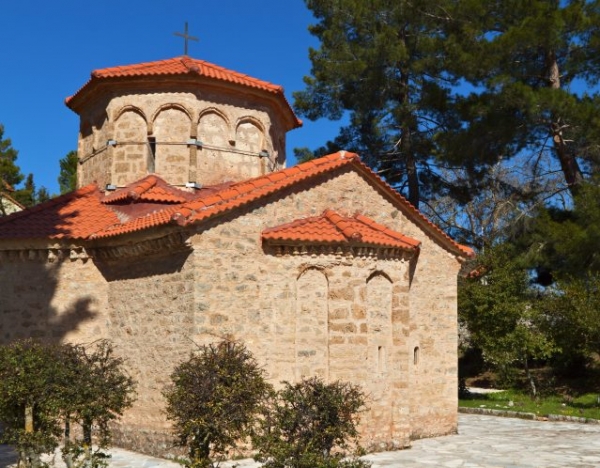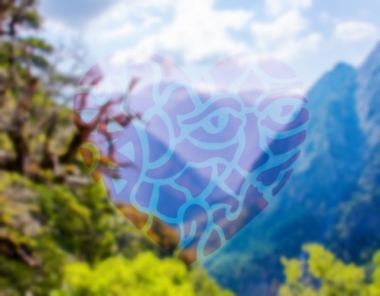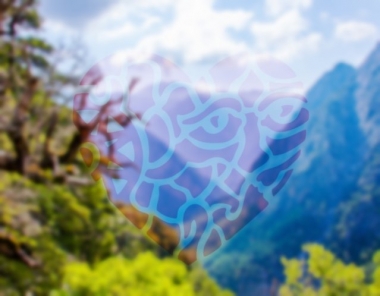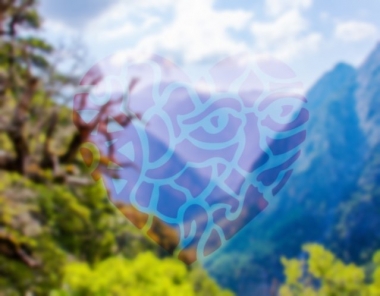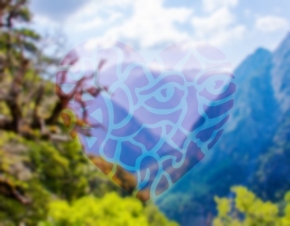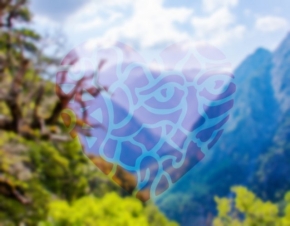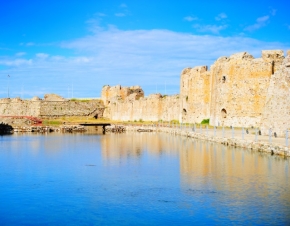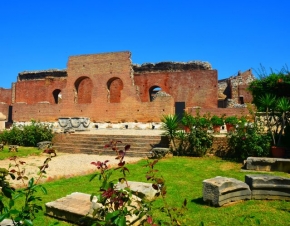The Monastery of Agia Lavra is approximately 4 km from Kalavryta.
The Monastery of Agia Lavra was founded in 961 by the monk Eugene. The original Catholic monastery was located approximately 500 meters from the current and was destroyed by the Turks in 1585. The Monastery of Agia Lavra stands in its current position since 1689.
The long-suffering monastery was burned by Ibrahim in 1826 and rebuilt in 1828. In 1844 it is demolished by an earthquake, until it is rebuilt in 1850. On December 14, 1943, following the massacre in Kalavryta, Germans burned the monastery and executed all monks found in it. In 1950 the Monastery of Agia Lavra was restored to its present form and still remains a place of pilgrimage for the Orthodox and a worthy destination for any visitor.
In Agia Lavra, according to the prevailing version, the Metropolitan Palaion Patron Germanos blessed in March 1821 the assembled Greek chieftains and raised the revolutionary banner declaring the Greek Revolution against the Turks.
What is certain is that here the first flag of the Greek Revolution and weapons of 1821 can be found, along with many other ecclesiastic relics that constitute the cultural treasure of the monastery; a treasure worth seeing.
Achaia Clauss Winery is situated in Petroto, under the mountain Panachaiko and 8 km from the center of Patras.
The history of Achaia Clauss starts in the 19th century, when the Bavarian Gustav Clauss, impressed from Patras and the vineyards of the region, decided to set up wineries. He acquires an area at the foot of Panachaiko and there gradually creates a the wine village with impressive stone towers and buildings. So starting in 1861, the Achaia Clauss winery prides itself to be the oldest winery in Greece.
In 1873 the famous wine Mavrodaphne is created in Achaia Clauss, a sweet and strong wine that was immediately loved both in Greece and abroad. A barrel of this 1873 first wine, perhaps the oldest wine of Greece, is kept until today in the cellars of the winery. Mavrodaphne and other excellent wines of Achaia Clauss, quickly established it as an outstanding winery in the minds of consumers.
From 1920 onwards, the winery passed into Greek hands continuing to grow dynamically. Today Achaia Clauss, besides being a major winery, also performs cultural work. In its architecturally impressive buildings and other sites, conferences are organized together with exhibitions and cultural or social events.
More information about Achaea Klaus can be found in http://www.clauss.gr and the number 2610 580100.
In the northwestern Peloponnese, between the county of Achaea and Ilia is the mount Erymanthos.
Erymanthos is the fourth in height mountain of the Peloponnese and is among the alpine mountains of Greece. Its highest peak is Olenos with altitude 2224 meters that is located in the region of Achaea, almost bordering with Ilia. Other peaks are Mougila (2169 meters), the Prophet Elias (2125 meters), the Pyrgakos (2050 meters), the Neraidovouni (the mountain of the fairies)(1923 meters), the Psili Tourla (1891 meters) and the Lepida (Blade) (1541 meters). From Mount Erymanthos several rivers derive such as Penaeus, the Selinountas, Erymanthos and others.
Erymanthos mountain is characterized by the wild natural surroundings and the dense vegetation with about a thousand different species of plants. The slopes of the 800 m and above are filled with forests reaching in some cases up to 1700 meters, but from then on the mountain is bare, thus creating a spectacular natural contrast.
According to mythology it was here that the famous hero Hercules made one of his labors by killing the Erymanthio Boar. If you are into hiking, mountaineering and climbing in a beautiful setting, you have to pass by Mount Erymanthos.
Spileo ton Limnon is located in the village Kastria, 17 km from Kalavryta.
This cave, Spileo ton Limnon, is unique of its kind , as it has 13 consecutive lakes in multiple levels. According to the findings the cave seems to be inhabited from 6000 BC but in the modern era it was only explored in 1964, while it opened to the public in 1990.
The total length of the cave is about 2 km, but cannot yet be visited throughout. However, the part available to guests compensates due to its unique beauty. Words fail to describe this wonderful spectacle of natural beauty, which can only be grasped in all its grandeur, if watched first hand. The sound of water and the echo of the cave make a unique natural melody that along with the exquisitely lit cave walls create a unique setting.
It goes without saying that when you are in the region, you absolutely must visit Spileo ton Limnon.
More information concerning the Spileo ton Limnon can be found in http://www.kastriacave.gr and the number 26920 31001.
In Patras, on a hill below the Panachaiko mountain is the Medieval Castle of Patras, or just Patras Castle.
The Medieval Castle of Patras was built in the 6th century AD by the Emperor Justinian, in the place where the ancient citadel of Patras used t be. In fact several of the castle's construction materials came from the ruins.
The Medieval Castle of Patras occupied over 22 acres and had six towers, moats and ramparts. The castle was a watchful guard for the wider region and passed successively through the hands of all conquerors. Byzantines, Franks, Venetians, Turks, even Germans during the Second World War settled in the castle, all making their own architectural interventions that stand out today.
It is worth noting that a statue from Roman times is endorsed in the castle walls, having a special significance for Patras; the famous "Patrinela ". According to popular tradition, the statue protected the city from epidemics, and at the terrible event of someone's death, it cried at night.
Today the Medieval Castle of Patras functions as an archaeological site and is ideal for a visit, both for the building and the magnificent views across the region.
The Roman Odeon of Patras is located in Ano Poli, west of Patras Medieval Castle.
According to Pausanias, the conservatory was built before the Theatre of Herodes Atticus (Herodion), although it was not as impressive, probably in the 1st century AD.
We have little knowledge for the period of its operation.
What is certain though, is that over the years the Roman Odeon gradually ceased to function and got covered with soil and buildings. This was its state until 1889, when the filling of the harbor was decided and soil needed to be taken from Strani hill. It is during this work that the almost forgotten conservatory was revealed.
The Roman Odeon was restored in 1956, gaining back its original form. Today the Roman Odeon is active, organizing numerous worth watching events, and its marble stands can accommodate over 2000 spectators.
But even when no event takes place, the Roman Odeon is a beautiful archaeological site and a visit will surely delight you.

